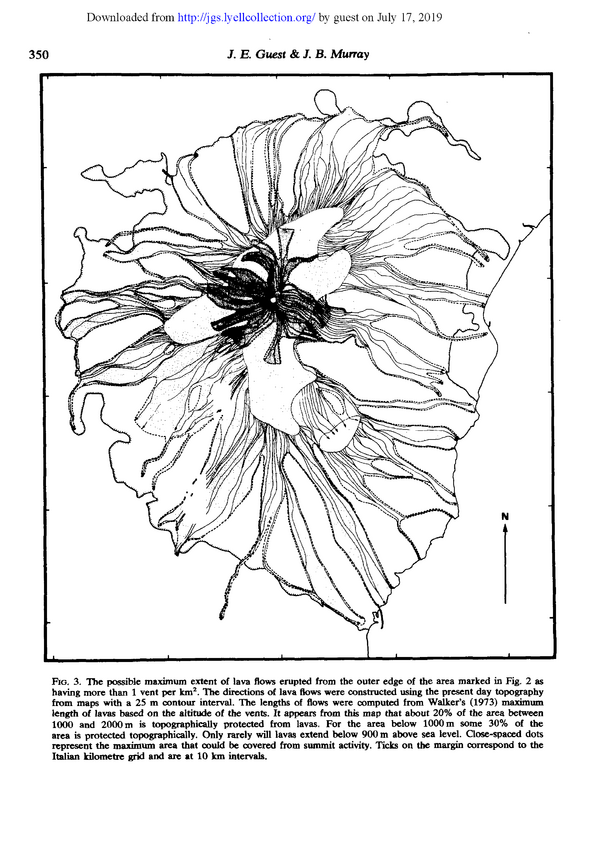The possible maximum extent of lava flows erupted from the outer edge of the area marked in Fig, 2 as having more than 1 vent per km²
Etna, Italy, 1979
Figure 3 in: Guest, J.E. & Murray, J.B. (1979). An analysis of hazard from Mount Etna volcano. Journal of the Geological Society, 136(3), p. 347-354. https://doi.org/10.1144/gsjgs.136.3.0347
This hazard map is the result of scientific research and was published in academic literature.
It is presented here to serve as an example of the map type or the map-making methodology. It is NOT the official, operational map. For the current operational hazard map, please consult the proper institutional authorities.

Click on thumbnail for full-size map. We do not have copyright permission to display the full-size image. If you are the copyright holder and wish to provide copyright, please contact us at admin@volcanichazardmaps.org. If link seems broken, try the archived version.
Map Data
Map ID 551 Hazard Process(es) Lava flows; Unstated or all hazards Hazard Zone Presentation Single hazard: A single hazard process is represented on a main map panel Temporal Scale Background, or long-term, map Spatial Scale Island Publication Format Figure in a journal article Zonation Method(s) Geologic history; Scenario modeling Zonation Model(s) Unnamed empirical altitude-length lava flow model (Walker 1973; Walker 1974) Scenario(s) Considered Size, VEI, or intensity; Source location or direction; Worst-case Hazard Zone Label(s) Hazard process name; Scenario name Probability Definition(s) Qualitative relative probability (e.g. high-medium-low); Scenarios imply probability Purpose Multiple: intended for multiple purposes including general hazard awareness, planning, and crisis management Audience Scientists (usually in scientific publication) Language(s) English Basemap(s) Simple or sketch map Basemap overlay(s) Diemsionality Planimetric (2D or map) view Color Scheme Symbols and/or lines only
